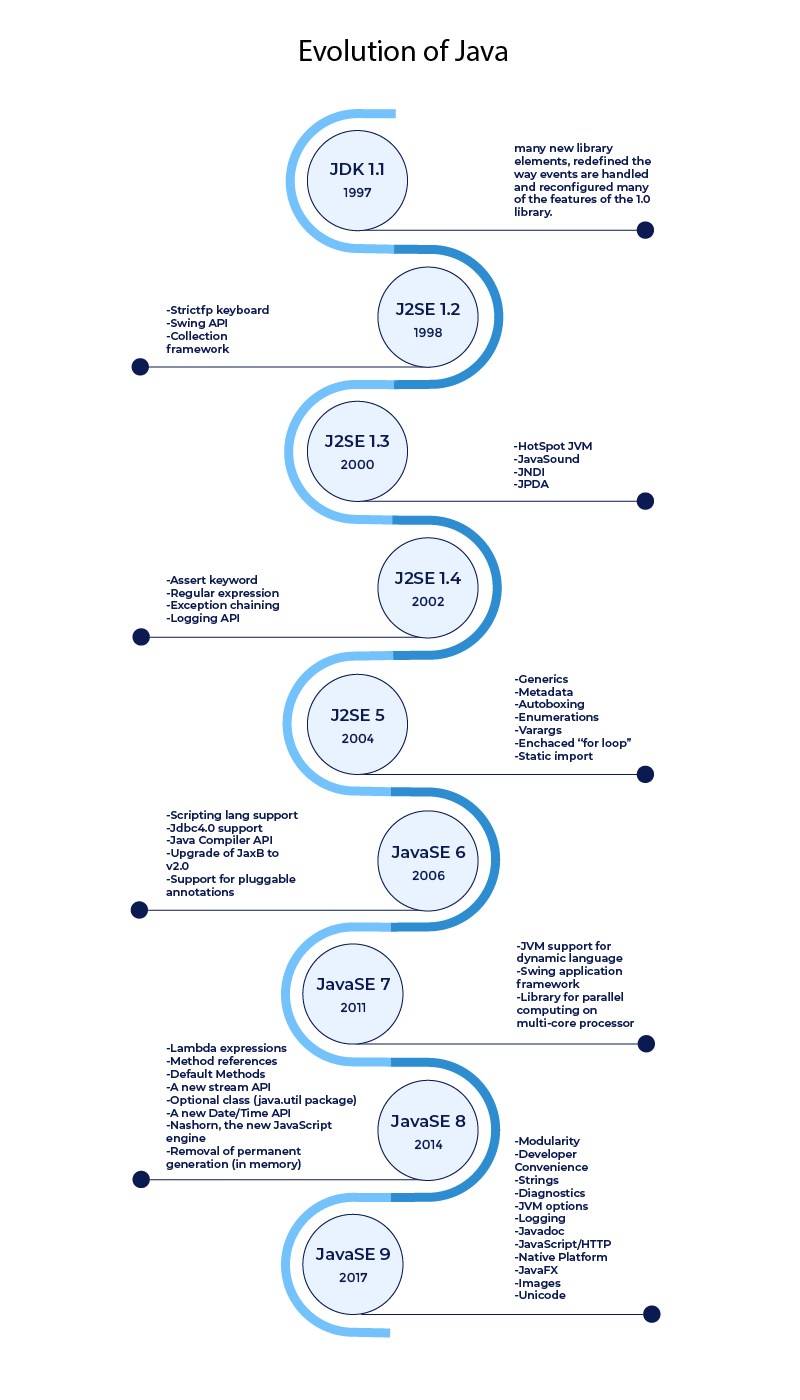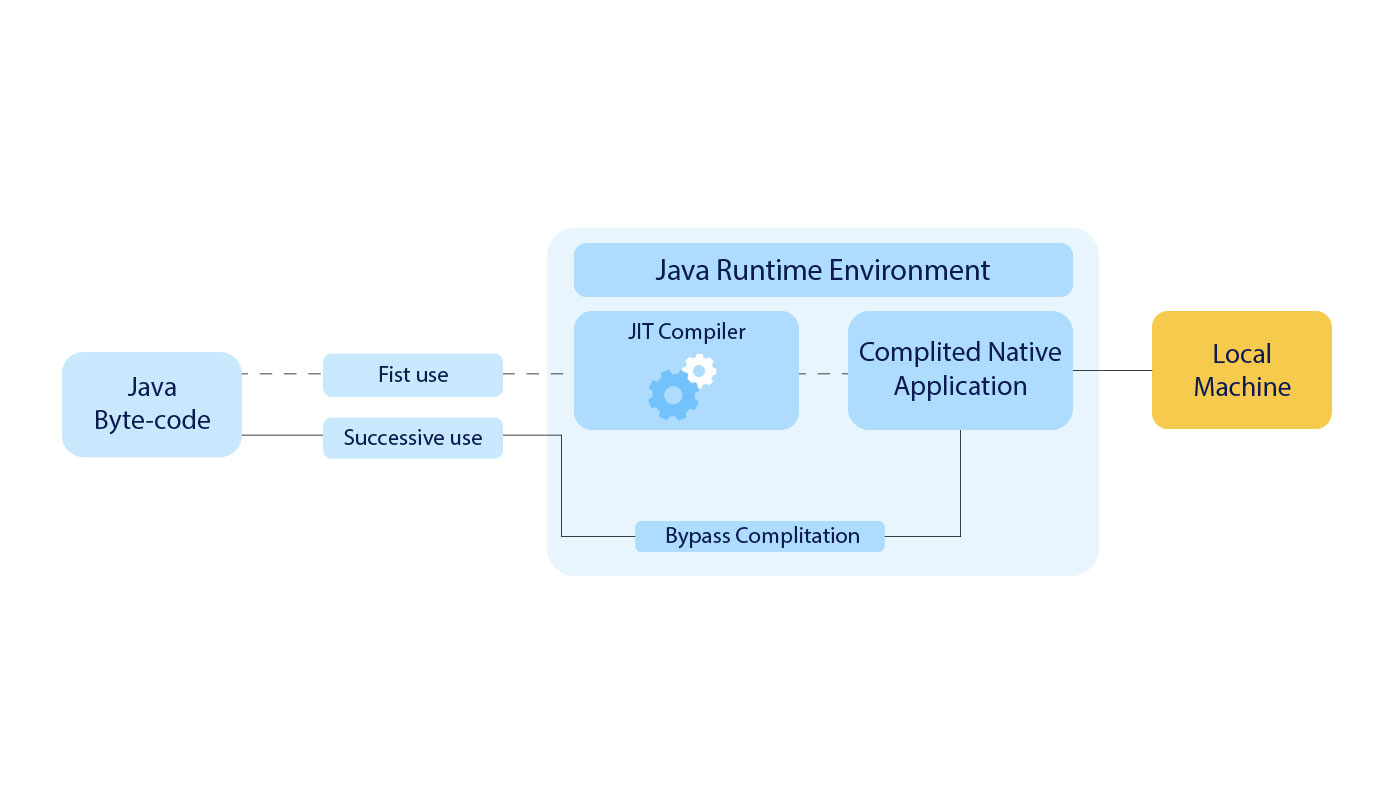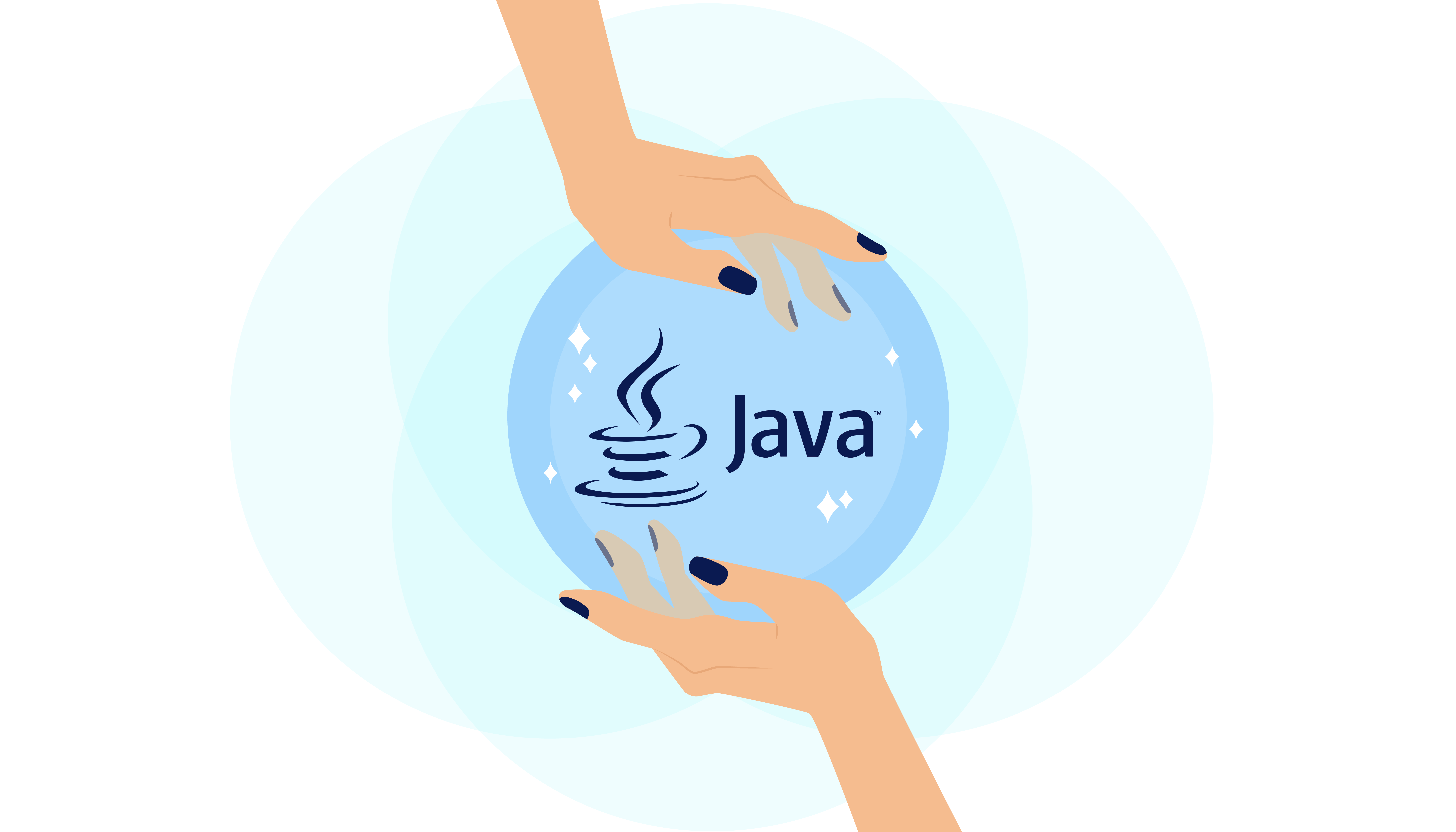Quarkus appeared to challenge everything we knew about Java. Ambitiously referred to as “supersonic subatomic”, it wipes out all limitations previously set by Java frameworks, making it a perfect choice for literally everything — from a simple social media app to a sophisticated banking system.
Already adopted by such well-established enterprises as Lufthansa and Vodafone, Quarkus promises to trigger a long-awaited Java rebirth and become the next big thing in the world of tech. So, what actually stands behind this hype — marketing or outstanding capabilities and impeccable performance? To cut a long story short, let’s get straight to the point and figure it out.
A Bit of Java History
But before we take a deep dive into Quarkus and expand on the features it provides, let’s have a look at the evolution of Java.
Java is probably one of the oldest programming languages that managed to survive and maintain its popularity until today. With the release of the first full version in 1995, it has become evident that this tech is going to take the market by storm replacing some of the popular leaders from that time. Being a strict-type programming language, it could offer impressive capabilities, outstanding performance and bug-free development.

Java bases its philosophy on the following core principles:
- Adoption of the object-oriented programming methodology;
- The possibility for the program to be executed on multiple operating systems;
- Built-in support for using computer networks;
- Designed to execute the code remotely and securely at the same time;
- Easy to use and maintain.
It is believed that these five tenets helped Java stand out as a reliable programming language traditionally used for high-load projects.
The Core Challenge With Java
When the hype around Java calmed down a bit, developers realized that traditional Java EE they heavily relied on had three core vulnerabilities that often complicated the work of software engineers:
- The syntax became more complex as developers had to draw numerous XML files and fiddle about with configurations.
- Components were increasingly hard to work with as they required developers to hard-code all the dependencies each component required.
- The code was hard-to-read and overloaded, which often slowed down applications.
These challenges were partially addressed by Spring — one of the most popular Java frameworks launched in 2002. Johnson, along with Juergen Hoeller and Yann Caroff created Spring with the goal to accelerate the development time and make Java more developer-friendly. Given the fact Spring became the fourth most loved framework by the development community, we can say they reached these goals.
The Rise of Microservices Architecture
It seems like microservices gathered the best development practices over the years to produce easily deployed, developed and maintainable products. Having Martin’s responsibility principle at the core, it allows for hassle-free development of high-load projects.
In simple words, microservices architecture allows breaking one large system into smaller independent yet collaborating components.
When applied to microservices, Spring often fails to meet the requirements of modern architecture. Let’s say we have an application that needs to be compiled as a microservices app. A developer has to do an upscale to call one more instance. For this purpose, a developer has to call Lambda function.
Lambda AWS is a function as a service offering provided by Amazon. It is a serverless event-driven platform that facilitates working with microservices architecture.
When it comes to calling the Lambda function, Spring takes nearly 5 seconds, during which the server can be down. For the purpose of building a microservice application, Java is often slow and bloated as it has an extensive memory footprint and Spring heavily relies on it. Thus, previously, if you wanted to work with serverless technologies, you had to opt for another alternative.

Quarkus — Java Framework Designed For Developers
“Supersonic subatomic Java” — with such a bold statement, Quarkus disrupted the market by making Java increasingly fast and developer-friendly. The container-first environment makes the framework suitable for working with microservices applications as it reduces the startup time to tens of milliseconds.
Quarkus also goes with a set of impressive benefits, including:
Container-first environment
When working with Amazon services where you pay for the time and memory consumption, having a lightweight and fast tech is paramount. Thanks to its support for GraalVM, Quarkus consumes only 1/10th memory compared to Java EE and boosts startup time by 300%. These features make Java suitable for microservices, Kubernetes, FaaS and other innovative techs.
Developer-friendly
Built by developers for developers — that’s how Quarkus founders describe their new creation. Indeed, the framework makes it easy to code right from the start, eliminating the need for complex configurations.
Built on Benchmarks
When asked what developers find the most appealing in Quarkus, they often say enterprise standards. Many new enterprise frameworks have a steep learning curve, meaning they require software engineers to test new APIs and acquire some knowledge, which takes a significant share of their time.
Quarkus contains the best of what can be found in Java as it is built on top of known and well-established standards. Java developers do not need to reinvent the wheel when they decide to try their hand at Quarkus. Just run through the documentation and get down to development — yes, that easy!
For you as a customer, it means that you won’t meet significant challenges if you decide to migrate your project to a new framework.
Scalability
It is believed that Java is suitable for enterprises only as it works well with high-load projects. Indeed, when it comes to sophisticated banking systems or fintech projects, Java is a perfect match as it is good at computations. Being a strict-type programming language, it minimizes the chances for error.
However, if you are a startup founder and need to build the first version of your product, you should not limit your choice to a traditional tech stack, such as Angular or Node.js. Once you acquire the first users and raise more investment, you’ll need to further scale your product. With Quarkus, you can be sure developers will meet your needs as this tech will cope well with sophisticated software systems, MVPs and lightweight mobile applications.
Testable Code
Quarkus enables developers to test and make changes to the code with a convenient hot-reload function. The framework takes an automated approach to QA as it reloads classes and changes the behavior inside the application. Quarkus allows executing and altering the product’s functionality within a few milliseconds, which is really impressive.
Any Limitations?
While the community raves about the newly launched framework, Quarkus still has a few limitations. The current challenge is built around the support for EE standards. For instance, EJB, or Jakarta Enterprise Beans, which is a Java API for modular construction, is not supported by the framework. But it would be fair to mention that Quarkus supports other functionality like transactions and others.
Given that Quarkus is a relatively new tech, it is bound to close those gaps in the nearest future. The Red Hat team is actively working to improve the framework and releases updates every 2-3 months. Apart from that, Quarkus is a promising project, which means massive investment is poured to make it better. With all these in mind, we can conclude that opting for this technology might be a wise and cost-effective decision in the modern highly competitive business environment.
Wrapping up
Is Quarkus really “supersonic subatomic” as it claims to be? After analyzing all its features and capabilities, we can confidently state it will meet all the expectations of the Java community. As Java becomes less bloated and more developer-friendly, it can be used for serverless tech, microservices architecture, Kubernetes and even more.
Whether you work for a well-established enterprise or you are about to start your own venture, Quarkus is the right tech to rely on.





